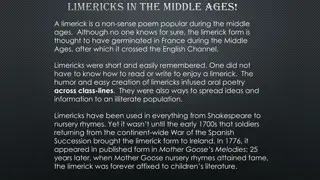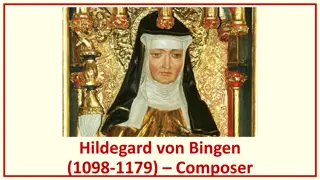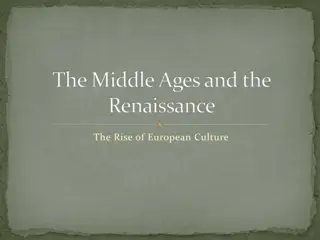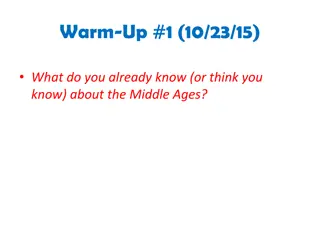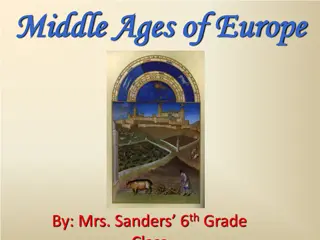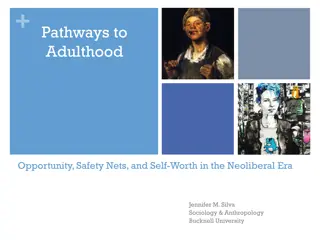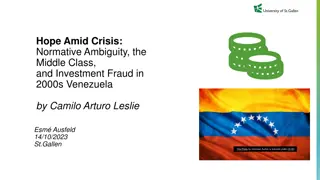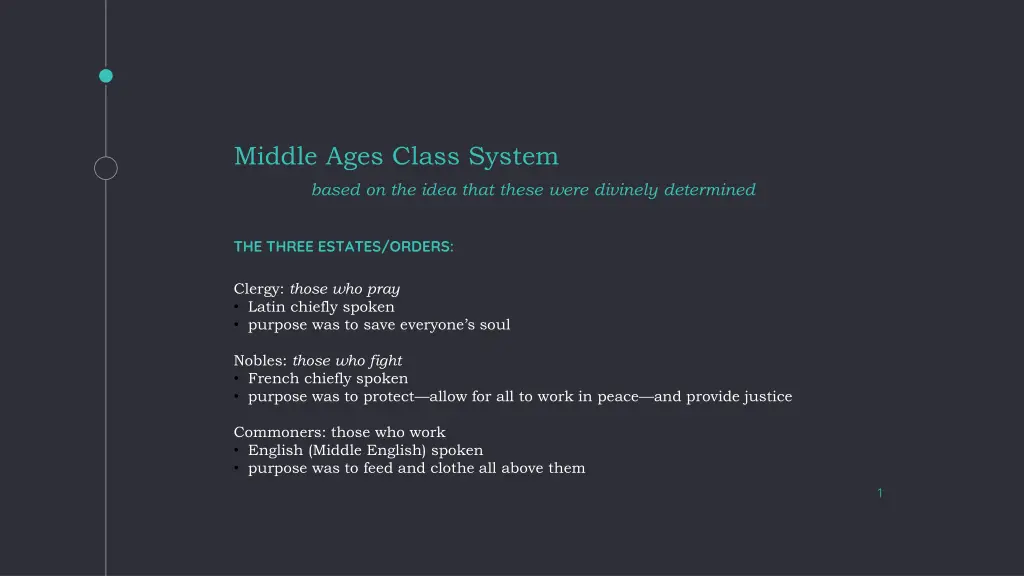
Middle Ages Class System and The Canterbury Tales Analysis
Explore the Middle Ages class system based on the three estates/orders - clergy, nobles, and commoners. Delve into Geoffrey Chaucer's narrative in The Canterbury Tales, depicting a mock-pilgrimage and societal critiques. Uncover the fascinating layers of social hierarchy, storytelling contests, and chivalry as highlighted in this insightful examination.
Download Presentation

Please find below an Image/Link to download the presentation.
The content on the website is provided AS IS for your information and personal use only. It may not be sold, licensed, or shared on other websites without obtaining consent from the author. If you encounter any issues during the download, it is possible that the publisher has removed the file from their server.
You are allowed to download the files provided on this website for personal or commercial use, subject to the condition that they are used lawfully. All files are the property of their respective owners.
The content on the website is provided AS IS for your information and personal use only. It may not be sold, licensed, or shared on other websites without obtaining consent from the author.
E N D
Presentation Transcript
Middle Ages Class System based on the idea that these were divinely determined THE THREE ESTATES/ORDERS: Clergy: those who pray Latin chiefly spoken purpose was to save everyone s soul Nobles: those who fight French chiefly spoken purposewas to protect allow for all to work in peace and provide justice Commoners: those who work English (Middle English) spoken purpose was to feed and clothe all above them 1
NOBILITY -born into royalty/title CLERGY LOWER ARISTOCRACY - titled or knighted MIDDLE - craftsmen - tradesmen - the plague had a huge influence LOWER - peasants/serfs - lower clergy
Clergy The clergy was considered equal to aristocracy at one time Not all clergy were equal the hierarchy of the church determined standing. Three positions we see in the Canterbury Tales (parson, summoner, pardoner) ranked the lowest.
Narrator Geoffrey Chaucer the character is not Chaucer the author or is he? We re introduced to his 1st person narration, as he explains the journey and sets up the frame story. He was at The Tabard, when this group of pilgrims arrives. He decides to join them. They agree to engage in a storytelling contest, mediated by the owner of the pub where they first meet, located in Southwark, just over the London Bridge.
FYI: The Canterbury Tales is a series of 24 tales told by a vast representation of late Middle Age English folk on a pilgrimage to Canterbury Cathedral, April 11, 1387. Scholars have verified the date based on the position of the constellation Aries and the reference to the sign of the Ram mentioned by the poet.
Stylistic Elements: Within this narrative voice and plot structure, Chaucer himself is hidden and can freely criticize or honor the society around him. Why would Chaucer want to shield himself? Chaucer creates a mock-pilgrimage of sorts, and it should be noted that a pilgrimage is considered as Christian allegory for life itself: In the pilgrimage of life, a person encounters moral difficulties and is tested. The shrine that is the goal is Heaven; a person, once there, is humble, and asks God for guidance.
Knight Our narrator clearly has a respectful, awed tone when describing the Knight. Chivalry: from the French word cheval which means horse derived from the Latin word caballus. A Caballarius was horseman; a chevalier was a knight. Who had followed chivalry, / Truth, honor, generousness and courtesy.

![READ⚡[PDF]✔ European Mail Armour: Ringed Battle Shirts from the Iron Age, Roman](/thumb/20552/read-pdf-european-mail-armour-ringed-battle-shirts-from-the-iron-age-roman.jpg)

